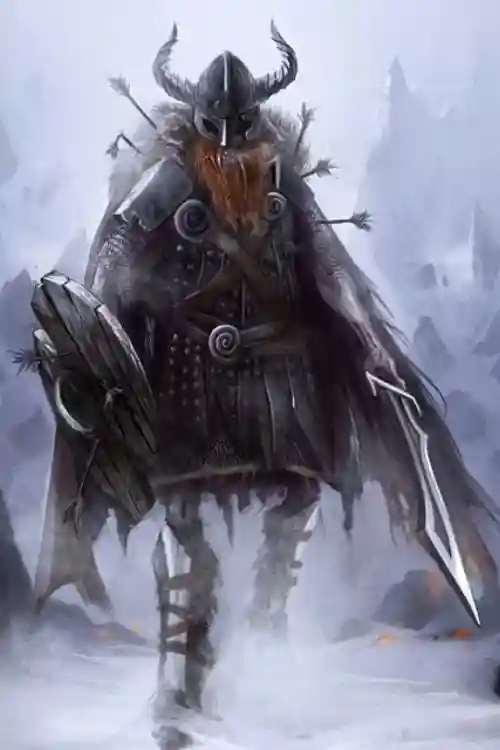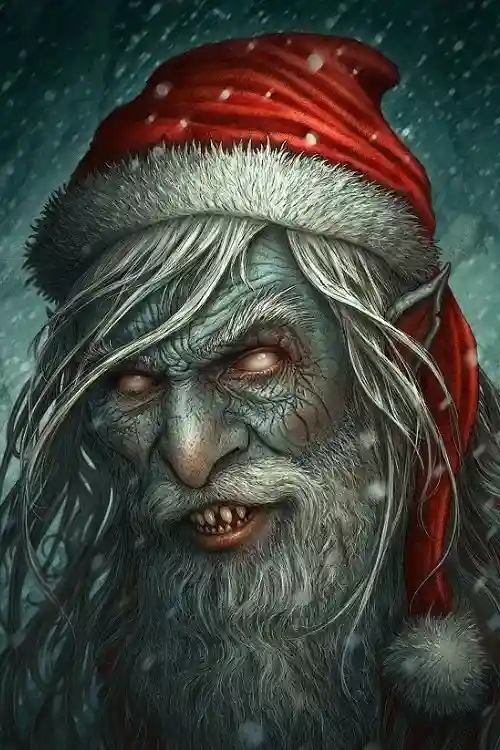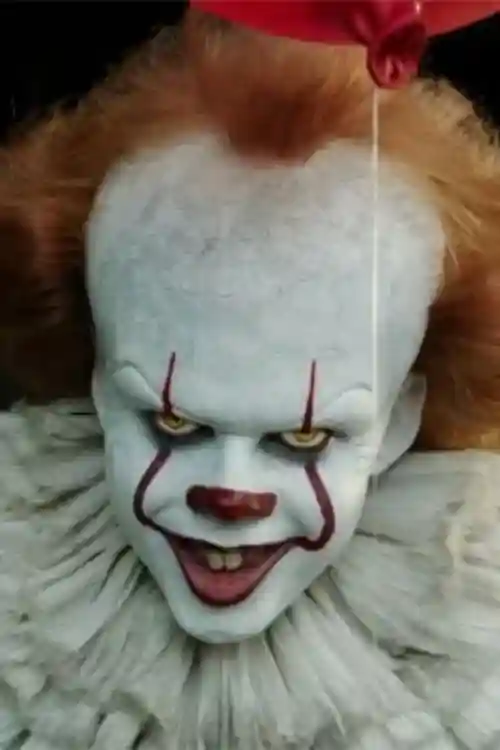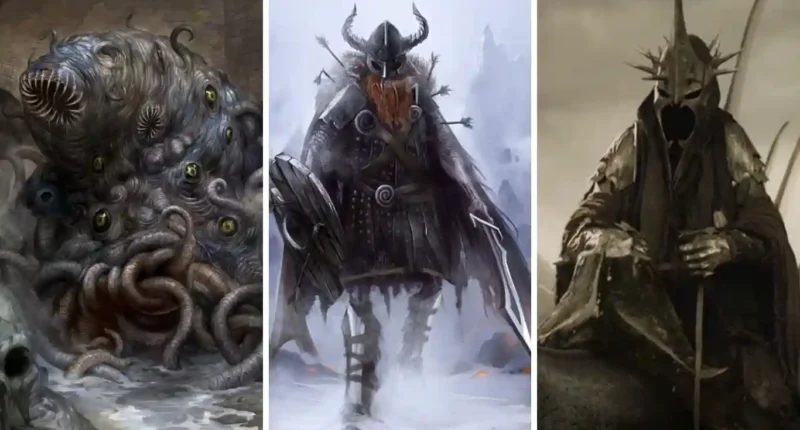10 Scariest Monsters In Literature: What features of a creature are particularly frightful. The power to kill is obviously one thing, but the creatures on this list go much more than that. They have a bad attitude, incredible powers, and occasionally break the fundamental laws of existence. This kind of characters are unspeakably evil, with no regret. They actually appear to enjoy it. There are top ten scariest monsters in the history of fiction which are as follows:
10 Scariest Monsters In Literature
A polyphemus (Greek mythology)

Greek mythology featured a cyclops named Polyphemus. They were a race of brutal, vicious one-eyed giants that destroyed enormous ships with their bare hands and devoured grown men like snacks. Odysseus and his men were kidnapped in a cave by Polyphemus, a particularly huge and terrifying cyclops, who then devoured many of the men. Fortunately, the brave Odysseus stabbed the giant’s eye out with a burning spear. Just barely, he and his remaining soldiers were able to flee without dying.
Nazgul (Lord Of The Rings)

Ringwraiths were formerly human beings who had evolved into dark, wicked beings. Only their ominous cloaks gave away their presence in our world; otherwise, they were undetectable. They travelled effortlessly between our world and the world of shadows while mounted on black, ethereal horses. The Ringwraiths, also known as Black Riders, were the dark lord Sauron’s servants that blindly carried out his terrible scheme. Due to a disease known as “the black breath,” merely being too close to them could result in unconsciousness, nightmares, and even death.
Victor Frankenstein

Victor was a mad scientist, not the actual monster. He was the malicious genius who, after discovering the key to endless life, used it to animate a monster eight feet tall made of corpses that had been stitched together. After all, the creature had been brought back from the dead, pursued by locals, and tormented like a hideous beast. It was understood why he acted badly. Later, the “monster” picked up reading and even social skills. But the truly terrifying character was Victor Frankenstein, the insane man who pretended to be God, the one who created the monster and let it loose on the world.
Draugr

The draugr were an extremely terrifying hybrid of a vampire, zombie, and ghost. They were evil undead beings that continued to exist after death in bloated, charred human corpses. Draugr grew to enormous sizes and possessed superhuman power. They still had some mental capacity and memories of previous lifetimes. Even in death, they caused havoc on the living, exacted retribution on their adversaries, and guarded the valuables of their former life.
They could murder by stomping on people with their powerful jaws, consuming them, or drawing blood. One such wicked beast is described in Iceland’s Grettir’s Saga as climbing up on an adversary’s roof every night and stomping on it forcefully enough to break the thick beams. Men were frequently driven insane by these nightly hauntings, and they eventually passed away from dread and misery. Draugr also possessed supernatural abilities, and many of them were resistant to common weapons. One could only be wrestled back into its grave and brought under control by a very courageous and very strong hero.
Shoggoth

A shapeless congeries of protoplasmic bubbles, faintly self-luminous, and with countless temporary eyes forming and unforming as pustules of greenish light all over the tunnel-filling front that bore down upon us, crushing the frantic penguins and slithering over the glistening floor that it and its kind had swept so evilly free of all litter, it was a terrible, indescribable thing larger than any subway train. Lovecraft depicted the Shoggoth in this way that the enormous animals could alter their size and shape, forming limbs and organs as needed. People went wild at the mere thought of these slimy, unfathomable extra-terrestrial creatures because they were so bizarre and beyond human comprehension.
Santa Clause

Long before Christianity, a terrifying figure known as Nacht Rupert also known as Santa Claus, roamed the desolate countryside while wrapped in straw, sporting antlers, and decked with bells. He was the leader of a tomtin army, a little group of ferocious little bloodsuckers. Nacht Rupert would appear in different villages and be seen peeking into people’s windows with his tiny vampires. This character was reported to offer tiny presents to anyone who followed the customs of the past and showed him respect.
Nacht Rupert was the subject of several folktales for many years, and he was both feared and revered. Church leaders in the region were horrified by the reports of this terrible monster preying on the populace when Christianity first arrived. So they made up stories that had Saint Nicholas in place of Nacht Rupert. But outdated myths persist, and their replacement was challenging. Years passed before the malevolent Nacht Rupert transformed into the cheery Saint Nick. Because of the shackles and bells he wore, Saint Nick was also known as Buller Clause or Belled Clause. Buller Clause and his tomtin would visit people’s homes and wake up sleeping kids from their beds while wearing blood-red costumes.
Hannibal Lecter

He is a cool, cunning man who devours his victims after killing them. He is aware of his bad nature and finds it entertaining. All of it is terrible enough, but what’s really unsettling is how normal-looking and intelligent he seems to be. Hannibal Lecter showed us that monsters don’t always have scary or unusual appearances; sometimes the scariest monsters are our neighbours or the person in line at the pharmacy.
Pennywise the Clown/It – (Stephen King’s It)

Pennywise was the pinnacle of the terrifying clown stereotype. Although the creature in the story, it had several forms, he was the most recognizable and terrifying. He was able to transform into anything, including a mummy and a werewolf. It was a mystical entity that embodied everything that humans dreaded and despised. He messed with people’s minds, mocked them, and terrified them. He had the power to bring forth people’s darkest nightmares, sending them insane or inspiring them to commit suicide.
The cunning, sneaky clown was skilled at playing on people’s anxieties and emotions as well as at manipulating them. He might entice individuals or unleash unspeakable atrocities upon them. Even worse, he mostly targeted kids. He was capable of murder, but before his victims passed away, he made sure they were thoroughly horrified and that was actually pretty funny to that clown.
Dracula

Although countless authors have attempted to make vampires frightening, no one has ever succeeded. All other vampire stories are merely poor imitations of Dracula, who was the original and best. The terrifying vampire Dracula murdered people and devoured their blood. Additionally, he had the power to control people’s souls and make them submit to him. He possessed infinite power. He was physically stronger than ten men and was impervious to conventional methods of killing. Even though he could transform into a wolf or a bat and fly through the air at night, Dracula had supernatural abilities that went well beyond those. He seemed polite and even suave in person. With his influence, he could lure you, and before you realized it, your soul was gone. The notion that he might have been based on a real-life mass murderer who impaled victims for dinnertime entertainment is just the cherry on top of a very terrifying cake.
Pazuzu (The Exorcist)

In his most powerful state, Pazuzu has a human body, a dog or lion’s head, wings, claws, and a scorpion’s tail. Pazuzu, however, who is portrayed in the book as a young Linda Blair, is quite frightening. Pazuzu is a depraved, profane being who won’t hesitate to kill anyone, including priests or tiny girls. This character, like the majority of the monsters on our list, taunts its victims to display its strength and haughtiness while instilling terror and fear in their thoughts and making them question everything. He doesn’t just kill; he first turns people inside out and then finishes them off. This being is the height of evil, unafraid even of men who have the support of the church.
Also Read: 10 Psychology Books That Will Change Your Thinking



